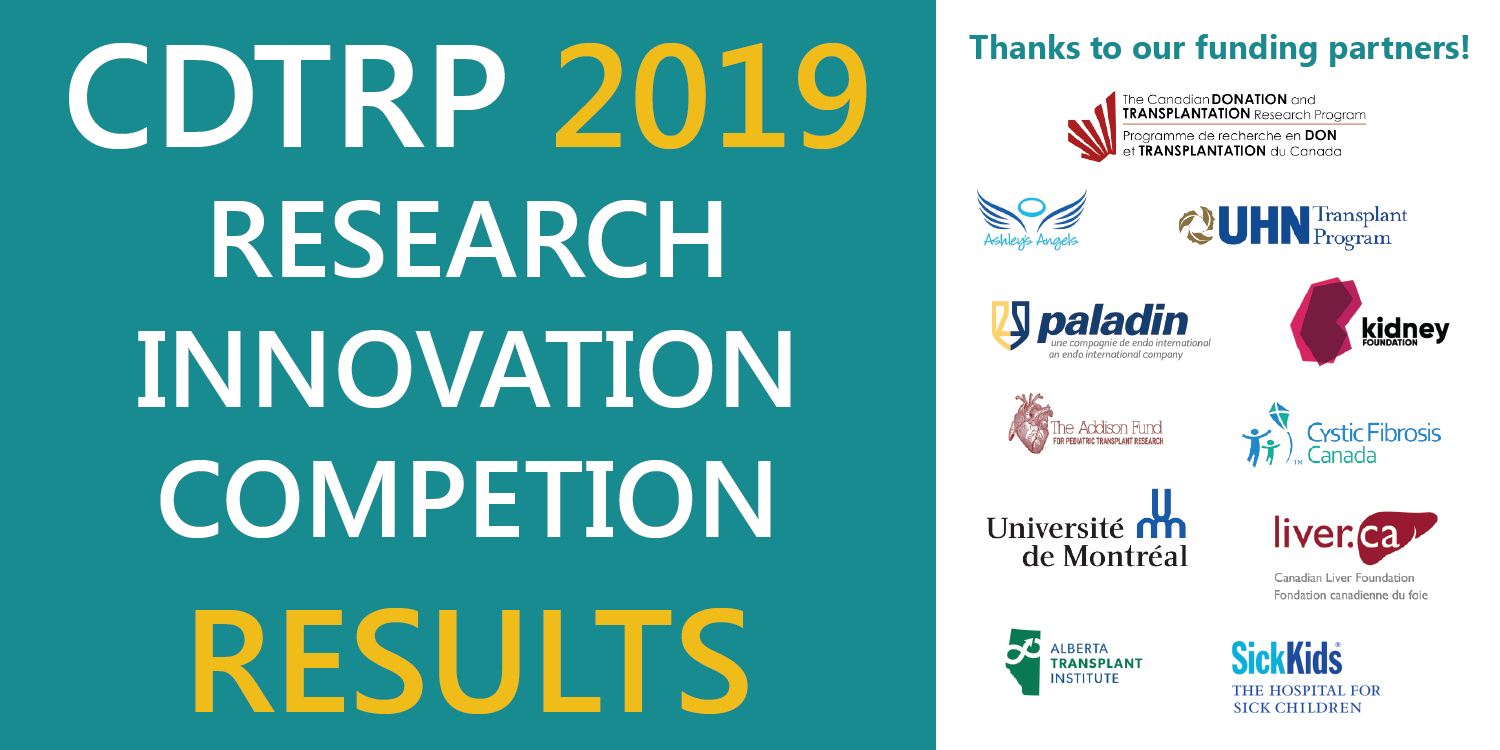
2019 CDTRP Research Innovation Grant Competition Results
The CDTRP is proud to share the results of the 2019 CDTRP Research Innovation Grant Competition and welcome 18 new projects into our national research structure.
This competition is made possible through the generous financial support, dedication and commitment from our national and regional partners, which include:
- Addison Fund / Transplant Research Foundation of British Columbia (TRFBC)
- Alberta Transplant Institute (ATI)
- Ashley’s Angels
- Canadian Liver Foundation (CLF)
- Cystic Fibrosis Canada (CF Canada)
- Kidney Foundation of Canada (KFOC)
- Paladin Labs Inc. (Paladin)
- SickKids Transplant & Regenerative Medicine Centre (SickKids)
- Université de Montréal (UdeM)
- University Health Network Multi-Organ Transplant Program (UHN)
Here are some quotes from our partners:
“Paladin Labs is proud to support innovative research aimed at improving transplant care” – Joseph Tcherkezian, Director, MSL, Paladin Labs Inc.
“The Canadian Liver Foundation is honoured to support the important work of the CDTRP and, in particular, the research conducted through the annual Innovation Grant. The health and longevity of liver transplant patients is an area of vital importance and one to which the CLF is entirely committed. We welcome the work of all those researchers whose work will be advanced by these grants. May your work truly continue in the CLF tradition of bringing liver research to life.” – Jennifer Nebesky, President and CEO, Canadian Liver Foundation (CLF)
“A project that could mean less biopsies and medication if it works? Yeah! I hate biopsies!” – Addison McArthur, heart transplant recipient, age 9 (for the Addison Fund/TRFBC)
We would also like to thank and acknowledge the hard work of the CDTRP New Initiatives Committee and our volunteer Peer Reviewers for participating in the CDTRP review process and for upholding an excellent level of professionalism and quality.
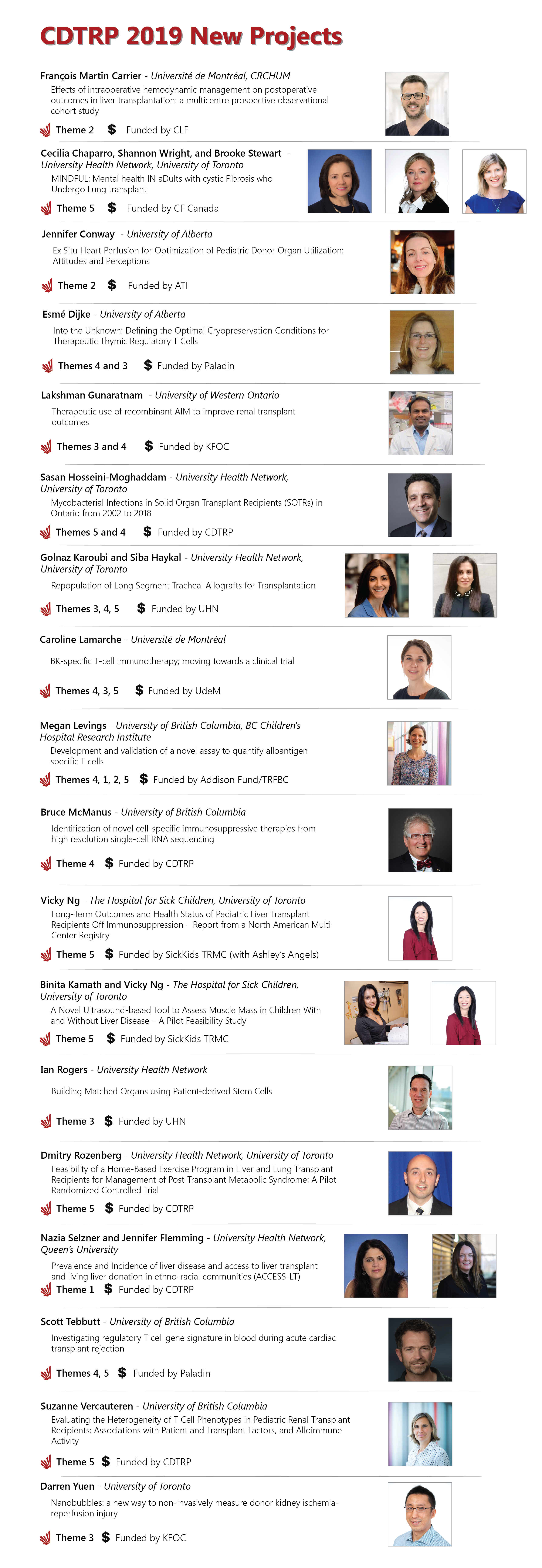
List of Abstracts
François Martin Carrier – Université de Montréal, CRCHUM
Effects of intraoperative hemodynamic management on postoperative outcomes in liver transplantation: a multicentre prospective observational cohort study – Theme 2
“Liver transplantation is a life-saving procedure for patients with end-stage liver disease, but it carries a high risk of complications. About 60% of liver transplant recipients suffer from a severe postoperative complication. Few perioperative interventions (conducted just before, during or just after a surgery) have been shown to reduce these complications in liver transplantation. Intraoperative fluid administration and blood pressure management is an important aspect of anesthesia and perioperative care in this population. A restrictive approach to fluid administration has been suggested to improve postoperative outcomes. We propose to conduct a study in Canada to assess the potential effects of fluid administration and blood pressure management on postoperative complications in liver transplantation. Such study will help understand the effects of such intraoperative interventions on important postoperative outcomes for the patients. This study will also inform the design of a future Canadian multicentre perioperative clinical trial in this population and help improve the perioperative care of these very sick patients.”
Cecilia Chaparro, Shannon Wright, and Brooke Stewart – University Health Network, University of Toronto
MINDFUL: Mental health IN aDults with cystic Fibrosis who Undergo Lung transplant – Theme 5
“Cystic Fibrosis (CF) patients who have a lung transplant often experience emotional distress following surgery. This distress may be described as anxiety, depression or trouble adjusting, and symptoms of this may include low energy, low appetite, feeling sad, worrying more than usual, and problems sleeping. These symptoms can make recovery harder than it needs to be. Currently, there is not a lot of research that studies mental health in CF patients who have had a lung transplant. The goal of our study is to answer the question: What are the mental health needs of CF patients after transplant? We will conduct one-on-one interviews with transplant recipients, their caregivers and healthcare providers who provide transplant follow up care. We will use the information from the interviews in the next phase of research, to develop and test an intervention that meets the mental health needs of the CF lung transplant recipients.”
Jennifer Conway – University of Alberta
Ex Situ Heart Perfusion for Optimization of Pediatric Donor Organ Utilization: Attitudes and Perceptions – Theme 2
“There is a gap between pediatric heart donor organ availability and the actual use of those hearts for pediatric transplantation. This results in a significant percentage of donor hearts which are not utilized. There are a number of reasons for this but long travel times and poor quality of the donor heart are some of the possible reasons. Finding ways to increase the use of pediatric donor hearts can decrease the deaths of children waiting for a transplant. Ex vivo or ex situ organ perfusion (ESHP) is a way to treat and transplant the donor hearts that may allow for longer travel times between donor and recipient sites without the problems that arise with the traditional methods of organ transport. This method has been used in adult heart transplantation but currently there is not a system designed for pediatric donor hearts. Therefore, there is a need for device development to allow the application of ESHP to the pediatric donor hearts. This effort not only requires the development of an appropriate device, but also it is important to gain an understanding of the attitudes and perceptions towards ESHP in the pediatric heart transplantation community as this method for donor organs would be a complete change to what is currently done. This study is therefore designed to assess stakeholder’s attitudes and perceptions of EHSP and to identify barriers to its use in pediatric heart transplantation.”
Esmé Dijke – University of Alberta
Into the Unknown: Defining the Optimal Cryopreservation Conditions for Therapeutic Thymic Regulatory T Cells – Themes 4 and 3
“KEEPING IT COOL: FREEZING REGULATORY IMMUNE CELLS FOR CELL THERAPY
Special immune cells called ‘regulatory T cells’ (or ‘Tregs’) are of enormous interest because they naturally suppress harmful immune responses. The use of Tregs as a cellular therapy is being explored by many researchers to treat a variety of immune disorders, including diabetes and transplant rejection. Tregs come from the thymus gland, a structure located in the upper chest. In children having heart operations, the thymus is usually removed because it is in the way of the surgeon. We recently showed that this discarded thymus is a source of huge quantities of very powerful Tregs, demonstrating great potential of Tregs from thymus to be used as a cellular therapy. Ideally, Tregs are collected from the thymus, grown in the laboratory, frozen in a special freezing solution and stored until needed. Freezing cells, however, can result in cell damage and loss. We will study how thymic Tregs are affected by freezing and thawing, and what freezing conditions are best to preserve the Tregs without damage. We will test new ‘anti-freeze’ components that protect Tregs from damage during freezing and thawing. By studying various characteristics of Tregs while they are being grown in the laboratory, we will also try to identify markers that will tell us when it is the best time to freeze the cells during the growth process. Using this knowledge, we can develop an optimal protocol to store thymic Tregs for clinical therapy.”
Lakshman Gunaratnam – University of Western Ontario
Therapeutic use of recombinant AIM to improve renal transplant outcomes – Themes 3 and 4
“A kidney transplant has the potential to prolong the life of people with kidney failure and immensely improve their quality of life. A major limitation of organ donation is the short lifespan of the organs when transplanted into a person. The damage that happens to an organ during the transplant process (e.g. lack of blood flow to the organ), and then from the person’s immune system (i.e. rejection) are major factors that determine the lifespan of transplanted kidneys. At the molecular level, this damage is caused by dying kidney cells which release their contents into the body and activate an immune response. Our laboratory has discovered a potential therapeutic agent, called “AIM”, which, when given immediately following transplant surgery, can help remove the contents that are released from dying cells and prevent further damage to the transplanted kidney. We now would like to test whether AIM can help prolong the lifespan of transplanted kidneys in an animal model that is similar to human transplantation; where the animals have different genetic backgrounds from each other. We expect that giving AIM to people that receive kidney transplants will reduce the damage caused by transplantation surgery and the effects of the immune response. AIM may become a revolutionary treatment used to make kidney transplants last longer in people with kidney failure.”
Sasan Hosseini-Moghaddam – University Health Network, University of Toronto
Mycobacterial Infections in Solid Organ Transplant Recipients (SOTRs) in Ontario from 2002 to 2018 – Themes 5 and 4
“Transplant patients are at risk of infectious diseases because of treatment with medications that suppress their immune system. Nontuberculous mycobacteria (NTM) are bacteria that are normally present in the environment. Inhalation of these bacteria may cause severe illnesses in patients with weakened immune systems. Person-to-person transmission of NTM infection is not common, in contrast to transmission of tuberculosis (TB). Transplant patients with NTM infection and TB may lose their transplanted organs or even die. In this project, we will first use large health databases to identify patients who received organ transplants in Ontario from 2002 to 2018. Then we will identify transplant patients who were infected with TB or NTM by linking to results of laboratory testing done at Public Health Ontario. By comparing rates of infection in transplant patients and the general population, we will determine how much transplantation increases the risk of TB and NTM infections. Next, we will identify transplant patients who died and kidney transplant patients who lost their transplanted kidneys after TB and NTM infection. We will compare these patients with uninfected transplant patients to determine the risk of death after infection in all transplants and the risk of losing transplanted kidneys because of infection after kidney transplant. This information is very important to reduce the risk of TB and NTM infections in transplant patients.
Golnaz Karoubi and Siba Haykal – University Health Network, University of Toronto
Repopulation of Long Segment Tracheal Allografts for Transplantation – Themes 3, 4, 5
“Trauma and cancer can lead to injury to long segments of the airway. These patients typically require frequent hospitalization and become dependent on permanent artificial airways. Although tracheal transplantation represents a possible solution for these patients, they would require long-term anti-rejection medication. A novel technique involves using a donor airway, removing all the cells and repopulating it with patient specific cells. The challenge of using patient-specific cells is their limited availability in the airway, and the limited potential for growth. Our study focuses on using a novel cell population; a stem cell population that can be easily procured from recipients through simple techniques such as skin biopsies. The cells have the unlimited ability grow and of becoming airway specific cells. The goal of this project is to evaluate these cells in a preclinical model. This stem cell population will be seeded on long segment airway defects in a bioreactor that has been used in our laboratory for several years. Following which, they will be transplanted in a survival model. This represents the first step in creating long segment airway scaffolds which can be transplanted without the need for anti-rejection medication.”
Caroline Lamarche – Université de Montréal
BK-specific T-cell immunotherapy; moving towards a clinical trial – Themes 4, 3, 5
“Solid organ transplantation was made possible by the use of immunosuppressive drugs to control the immune system which sees the organ as foreign and naturally would reject it. BK polyomavirus is usually an inoffensive virus that stays and hide in kidneys, controlled by our immune system. However, because of the weaker immune system of kidney transplant recipients (KTR), it can reactivate in the graft and lead to a decrease in graft function and even graft loss. For now, the only treatment is to decrease the amount of immunosuppressive drugs, but it comes with the risk of graft rejection. Our ultimate goal is to develop a new method to give back the ability to fight and control this virus without increasing rejection’s risk, using the patient’s own immune system. We want to collect immune cells (white blood cells) from the blood of patients affected by this virus and expand the cells that are specifically able to control it in the lab (in vitro). The long term objective of this project is to devise a treatment that would involve the re-injection of the patient’s own immune cells, but that are now able to stop this virus. This approach has been used mainly in bone marrow recipients and was proven to be very effective. However, is has never been tested using a KTR own immune system. We previously showed that we are able to collect and expand those cells from KTRs affected by this virus in the lab. Those cells were shown to be safe for the graft and effective against the virus. We propose here to set the foundation to move to the first clinical trial by fulfilling the data needed in order for Health Canada to approve our study. We also want to study which of the most commonly used immunosuppressive drugs have more impact on the cells trained to fight this virus. This will allow us to apply for a pan-Canadian clinical trial as well as helping us deciding which of the immunosuppressive drugs should be decreased first in the case of BK polyomavirus reactivation.”
Megan Levings – University of British Columbia, BC Children’s Hospital Research Institute
Development and validation of a novel assay to quantify alloantigen specific T cells – Themes 4, 1, 2, 5
“Following transplantation, immune cells in the recipient recognize the new organ as a foreign invader and subsequently launch an attack to destroy it. To stop this immune response, transplant recipients are placed on immunosuppressing drugs that severely reduce the immune system’s normal ability to fight off infections and cancers. It is therefore critical to prescribe just enough immunosuppressing drugs to prevent organ rejection, but not so much that patients suffer from the numerous side effects of these medications. Currently, there are no tools available to measure how well immunosuppression is working in each patient. Although biopsies are often performed to assess whether rejection is happening or not, they are often done too late, after immune cells have caused irreversible organ damage. We need a way to measure immune responses to transplants so that changes in immunosuppression can be made proactively, rather than reactively. We propose to develop a new test that will rapidly measure immune responses to an organ using a small amount of blood. The test is based on a fascinating immunological phenomenon whereby immune cells from the recipient that want to kill the transplanted cells pick up proteins that are exclusively expressed on the very cells they are trying to attack, allowing us to quantify the number of these killer immune cells. We believe that by quantifying these dangerous immune cells, we will be able to determine the risk of transplant rejection and give clinicians the information they need to prevent rejection and individualize immunosuppressive drug regimens.”
Bruce McManus – University of British Columbia
Identification of novel cell-specific immunosuppressive therapies from high resolution single-cell RNA sequencing – Theme 4
“Transplantation is the standard of care for millions of patients with end stage heart failure. Unfortunately, acute immunological rejection of the transplanted heart and the prolonged use of immunosuppressants to combat this rejection that have many toxic side effects continue to pose major issues for long term patient outcomes. Methods to identify novel drug candidates in an expedited manner and new drugs that can be delivered more precisely to the site of rejection remain major unmet needs for in heart transplantation research and clinical care. Our hypothesis is that high resolution molecular profiling and machine learning approaches can precisely identify new molecular pathway candidates that can be targeted to treat acute rejection and organ damage. Our current data suggest that there are specific sets of molecules and immune cells that are significantly altered in the heart tissue and blood during acute rejection. In this project, we will perform single cell RNA sequencing on heart biopsy tissue from transplant patients to better delineate the molecular changes in immune cells during acute rejection. We will then use this data and large-scale drug databases to computationally identify drug targets and drug combinations that can reverse the molecular changes. Our team is comprised of pioneers in cardiovascular pathology, diagnostics development, and bioinformatics. This work can lead to a better understand of acute rejection at a single-cell level, and future projects where we can use specific drug delivery technologies to bring novel treatments to immune cells with high efficacy and low toxicities.”
Vicky Ng – The Hospital for Sick Children, University of Toronto
Long-Term Outcomes and Health Status of Pediatric Liver Transplant Recipients Off Immunosuppression – Report from a North American Multi Center Registry – Theme 5
“Current standard of care following liver transplantation includes life-long maintenance anti-rejection medicine, which is individually tailored with the goal of keeping the transplanted organ healthy while avoiding complications caused by the medicines themselves. There are also risks of “too little” immunosuppression, and so best outcomes mandate balancing the needs of the patient and the transplanted organ. This study seeks to learn from children who have achieved the goal of transplant medicine: a healthy liver without anti-rejection medicine. Many of these children are concurrently followed in the SPLIT registry, which houses the largest longitudinal database on children transplanted in Canada and the United States. This study provides the opportunity for us to characterize the clinical outcomes and health status of children off and on immunosuppression enrolled in a multi-center longitudinal database, and include assessment of the risk vs. benefit of being able to stop anti-rejection medicines while maintaining the health of both the patient and of the transplanted liver.”
Binita Kamath and Vicky Ng – The Hospital for Sick Children, University of Toronto
A Novel Ultrasound-based Tool to Assess Muscle Mass in Children With and Without Liver Disease – A Pilot Feasibility Study – Theme 5
“Muscle loss (a concept called sarcopenia) is associated with poor outcomes (such as longer intensive care unit stays, prolonged hospital stays, and increased serious infections) following liver transplantation. Computed tomography (CT) imaging of a muscle in the abdomen (called the psoas muscle) is the recommended best technique to diagnose sarcopenia in patients with end-stage liver disease. However, CT is not an ideal tool to serially monitor muscle loss in children because of radiation risks. In adults, ultrasound is used to quickly and safely measure thigh muscle thickness (without risks of radiation exposure) in order to monitor muscle loss. Our study proposes to assess the feasibility of measuring thigh muscle thickness in babies and young children using ultrasound. We believe that the importance of assessing and serially monitoring sarcopenia with a safe and readily available tool such as ultrasound in children is that we will be able to identify muscle wasting prior to transplantation, and then offer targeted interventions to these patients in order to improve their outcomes after liver transplantation.”
Ian Rogers – University Health Network
Building Matched Organs using Patient-derived Stem Cells – Theme 3
“In Canada, 2.6 million people have kidney disease. The most effective therapeutic strategy for kidney failure is dialysis or transplantation. However, the average waiting time for a donor kidney is 5-8 years and the dialysis survival rate is 33% at 5yr. This underscores the need for the development of new methods for treating kidney disease. Current kidney therapy relies on medication, dialysis and transplantation. Cell therapies, whereby disassociated cells are introduced to the area of damage, are not efficient due to the density and complexity of the kidney and result in very few cells actually engrafting. This means improved treatments will come from drug discovery, and for patients with chronic and severe kidney disease, transplantation. Therefore, transplantation will remain as a common treatment procedure for end stage renal disease. Thus the demand for donor organs will continue to increase and organ shortage will be the major hurdle to treating patients. To increase the donor pool, more marginal kidneys are used resulting in increased delayed graft function with a negative impact on the patient’s long-term outcome. In contrast, building customized kidneys with recipient generated stem cells would generate an unlimited supply of high quality tolerant grafts without the need for immunosuppression. Kidney disease is an ideal model for personalized organs because patients can be maintained on dialysis while the organ is being manufactured. There is a strong precedent established in the literature for rebuilding organs such as the liver, lung and heart.”
Dmitry Rozenberg – University Health Network, University of Toronto
Feasibility of a Home-Based Exercise Program in Liver and Lung Transplant Recipients for Management of Post-Transplant Metabolic Syndrome: A Pilot Randomized Controlled Trial – Theme 5
“Background: Liver (OTL) and lung transplant (LTx) recipients are at risk for post-transplant metabolic syndrome (PTMS), a condition of excess body weight, elevated blood sugar, cholesterol and blood pressure. PTMS is common affecting 50% of OTL and 25% of LTx recipients in the late (> 1-year) post-transplant period and associated with increased cardiovascular illness and long-term survival. There is some evidence that supervised exercise can improve individual elements of PTMS in the early post-transplant period. However, it remains unclear whether a home exercise program can be performed with good adherence and training intensity. Thus, a pilot study is needed before this can be performed in a large clinical trial to assess effects on PTMS. Objectives: 1) To study whether a three-month home exercise program in OTL and LTx recipients can be successfully performed by participants at one-year post-transplant with sufficient adherence. 2) To estimate the effect of exercise training on PTMS, body make-up, self-confidence with exercise and quality of life. Methods: We will randomly assign 20 OTL and 20 LTx patients at one-year post transplant to receive a homebased exercise program versus usual care. The exercise group will perform walking and muscle strengthening exercises over a 12-week period guided by a trainer through weekly phone calls and digital application with manuals, videos, and several strategies to improve self-confidence with exercise. Both groups will receive advise at the start on healthy eating and physical activity. Program satisfaction and adherence will be evaluated and estimates of the effects of exercise on PTMS, body make-up, walking ability, and quality of life will be assessed. Significance: This study will be the first of its kind to assess whether home exercises can be achieved with a good enough training adherence using health technology and strategies to promote self-confidence with exercise. The results will help us with designing future studies to offset the effects associated with PTMS.”
Nazia Selzner and Jennifer Flemming – University Health Network, Queen’s University
Prevalence and Incidence of liver disease and access to liver transplant and living liver donation in ethno-racial communities (ACCESS-LT) – Theme 1
“The incidence and prevalence of liver cirrhosis and liver cancer are rising in Canada. Liver transplantation is a life-saving treatment for many of these patients. However, members of immigrant and ethnic and racial minority communities in Canada face myriad barriers. Many patients do not know they have liver disease and are not receiving timely diagnosis or referrals to a transplant centre. In some communities, there is low awareness and support for organ donation, whether deceased or living. The goal of ACCESS LT project is to study the epidemiology of liver disease and access to liver transplantation in ethno-racial communities in Ontario and in Canada and engage patients, donors and community leaders to address barriers to transplantation. This project will ensure that One-Transplant- For-Life by fulfilling every donor opportunity and turning transplantation into a cure, the transplant community must expand and diversify the pool of available organ donors to better match the needs of those with organ failure.”
Scott Tebbutt – University of British Columbia
Investigating regulatory T cell gene signature in blood during acute cardiac transplant rejection – Themes 4, 5
“Patients receive heart transplants as a life-saving measure after heart failure; thus, ensuring the success of the transplant is of utmost importance. Rejection is a primary cause for heart transplant failure, and consequently, patients must take drugs that suppress the immune system to prevent rejection. However, these drugs are highly unspecific and cause serious side effects that can be life-threatening. New immunosuppressive drugs that can prevent transplant rejection while allowing normal immune function can greatly improve care and patient outcomes. One type of immune cells called regulatory T cells (Tregs) can effectively suppress the immune system in a highly specific manner. We believe these cells can be effective in preventing and treating acute rejection. Working toward such a goal, our research plan is to first understand how Tregs behave during rejection. We will track their activities by measuring 46 genes in the blood of heart transplant patients throughout the first year post-operation. These genes provide valuable information on the risk of acute rejection at a given time and on changing Treg responses. This work will help us understand the role that Tregs play during rejection and can lead to creating novel therapies for preventing and treating rejection for heart transplant patients.”
Suzanne Vercauteren – University of British Columbia
Evaluating the Heterogeneity of T Cell Phenotypes in Pediatric Renal Transplant Recipients: Associations with Patient and Transplant Factors, and Alloimmune Activity – Theme 5
“Some children with a kidney transplant experience rejection, which can result in reduced kidney function or even loss of their transplant. Children are at a higher risk than adults for losing their kidney transplant function. Knowing which children are at higher risk would help identify who may benefit from new treatments. We are still looking for a better test to tell us who may be at of kidney rejection. We know that the balance between two types of white blood cells may be important: effector T cells (attack foreign cells), and regulatory T cells (help the immune system accept foreign cells). Finding higher levels of the regulatory T cells (compared to effector T cells) in the blood may help us to predict who is likely to accept the kidney transplant long term. For children with lower levels, there might be options for different treatments to improve these changes. We will study the levels of different T cells in the blood of patients with and without kidney rejection along with other markers of the immune response in the urine to see if this would help us predict rejection. Our hope is to start using this kind of approach both in the clinic to monitor how children are doing with their transplant, and also for research to develop better treatments for rejection.”
Darren Yuen – University of Toronto
Nanobubbles: a new way to non-invasively measure donor kidney ischemia-reperfusion injury – Theme 3
“While kidney transplantation can be a “gift of life”, we know that kidneys are injured during the transplant surgery, and that this injury can affect kidney function. This damage is due to the loss of blood flow when a kidney is taken out from the donor (“ischemia”) and put into a recipient (“reperfusion”). This process, called “ischemia-reperfusion injury” (IRI), occurs in every transplanted kidney. A major feature of IRI is blood vessel damage, resulting in less blood flow in the kidney after it is transplanted, and leaky blood vessels that allow fluid to inappropriately accumulate in the kidney. IRI severity determines how well the kidney will work after transplant. Doctors have no way of measuring IRI severity, and so can not easily predict how well a kidney will work. Thus, doctors can not tell patients what to expect after transplantation, and scientists can not easily test new anti-IRI drugs. We have developed a new ultrasound technique that measures kidney blood vessel damage. This technique can be done quickly, and based on our preliminary experiments seems to measure IRI in the kidney. We want to test if our new technique can accurately measure kidney IRI severity, and predict how well the kidney will function after IRI. These initial experiments will be done in mice, but if successful, will lead to studies in large animals and then a first-in-human clinical trial. Our hope is to provide a new tool for doctors to help better manage kidney IRI, and thus improve transplant outcomes.”










 ity of Alberta and has received training in patient-oriented research through the University of Calgary’s PACER (Patient and Community Engagement Research) Program. He is the Patient, Family, and Donor Partnerships & Education Manager with the Canadian Donation and Transplantation Research Program. In this role, Manuel builds relationships patient partners with investigators and strengthens capacity among CDTRP patient partners.
ity of Alberta and has received training in patient-oriented research through the University of Calgary’s PACER (Patient and Community Engagement Research) Program. He is the Patient, Family, and Donor Partnerships & Education Manager with the Canadian Donation and Transplantation Research Program. In this role, Manuel builds relationships patient partners with investigators and strengthens capacity among CDTRP patient partners.
 Anders Billström
Anders Billström  Gareth Wiltshire
Gareth Wiltshire









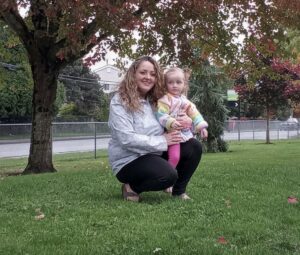






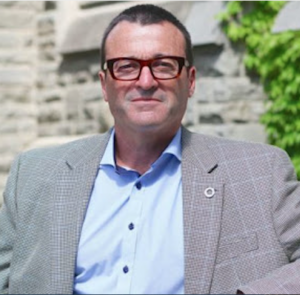



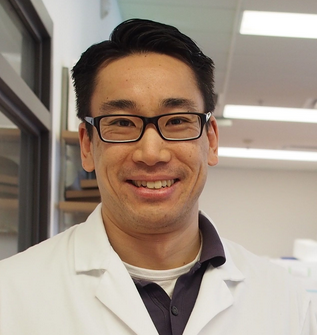







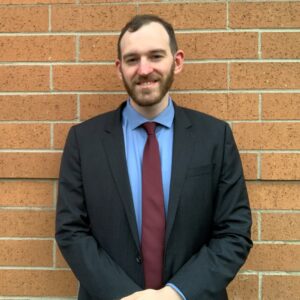



 K
K
 Sherrie Logan
Sherrie Logan 


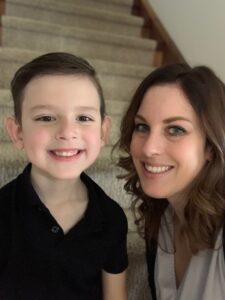 born and raised in Edmonton, AB. With a degree in Music Performance (saxophone performance) and Education, Lindsey has taught for over a decade in the Edmonton Public School system. When she is not teaching, she is very involved in the music community, performing in the Edmonton Winds, conducting her own community ensemble (The Beer League Band) and on numerous musical boards across the province. For the past 5 years, Lindsey has had to take a break from teaching after having her amazing son, George. Maternity leave did not goes as expected as George was diagnosed with Dilated Cardiomyopathy at 5 months old and required 2 heart transplants before the age of 4. During this time, Lindsey has also began to dedicate her time building and expanding her charity: Big Gifts for Little Lives, where they raise money to fund Pediatric Heart Transplant research at the Stollery.
born and raised in Edmonton, AB. With a degree in Music Performance (saxophone performance) and Education, Lindsey has taught for over a decade in the Edmonton Public School system. When she is not teaching, she is very involved in the music community, performing in the Edmonton Winds, conducting her own community ensemble (The Beer League Band) and on numerous musical boards across the province. For the past 5 years, Lindsey has had to take a break from teaching after having her amazing son, George. Maternity leave did not goes as expected as George was diagnosed with Dilated Cardiomyopathy at 5 months old and required 2 heart transplants before the age of 4. During this time, Lindsey has also began to dedicate her time building and expanding her charity: Big Gifts for Little Lives, where they raise money to fund Pediatric Heart Transplant research at the Stollery.






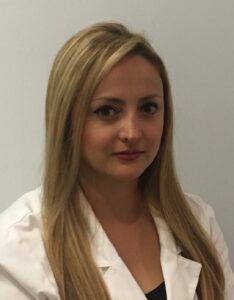








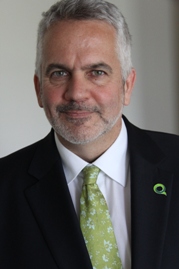






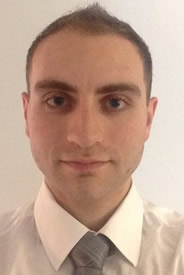






















 Dr. Caigan Du is a scientist at the Vancouver Coastal Health Research Institute and an assistant professor in the Department of Urologic Sciences at the University of British Columbia. He received a Ph.D. degree in Biochemistry in UK and postdoctoral training in Immunology in USA. He is interested in the pathogenesis of kidney ischemia-reperfusion injury and transplant rejection, and molecular control of urinary malignancies. He has been studying the impact of kidney donor-derived factors on renal allograft rejection, and the molecular pathways of kidney injury and regeneration in experimental models. He is also interested in developing medical solution including drugs made from natural compounds for all kinds of health problems, including immune disorders, organ preservation, kidney failure and urinary cancer. He is the PI of many grant supports from the Kidney Foundation of Canada and the Canadian Institutes of Health Research.
Dr. Caigan Du is a scientist at the Vancouver Coastal Health Research Institute and an assistant professor in the Department of Urologic Sciences at the University of British Columbia. He received a Ph.D. degree in Biochemistry in UK and postdoctoral training in Immunology in USA. He is interested in the pathogenesis of kidney ischemia-reperfusion injury and transplant rejection, and molecular control of urinary malignancies. He has been studying the impact of kidney donor-derived factors on renal allograft rejection, and the molecular pathways of kidney injury and regeneration in experimental models. He is also interested in developing medical solution including drugs made from natural compounds for all kinds of health problems, including immune disorders, organ preservation, kidney failure and urinary cancer. He is the PI of many grant supports from the Kidney Foundation of Canada and the Canadian Institutes of Health Research.
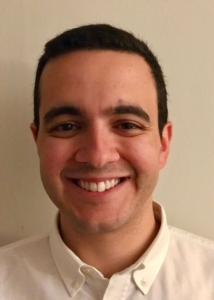














 Heather Badenoch is a non-directed living liver donor and communications strategist. As the president of Village PR, she provides strategic communications direction and training to not-for-profit clients in community and health. An active transplant volunteer, Heather helps transplant candidates find living donors by running their public appeals, small and large, pro-bono. She also mentors potential living donors on the path to living donation. Heather is a volunteer with the UHN Centre for Living Organ Donation and the Canadian Donation and Transplant Research Program. She and her spouse adopt rescue dogs and volunteer together with Community Veterinary Outreach, a group providing free veterinary care to the pets of people who are homeless.
Heather Badenoch is a non-directed living liver donor and communications strategist. As the president of Village PR, she provides strategic communications direction and training to not-for-profit clients in community and health. An active transplant volunteer, Heather helps transplant candidates find living donors by running their public appeals, small and large, pro-bono. She also mentors potential living donors on the path to living donation. Heather is a volunteer with the UHN Centre for Living Organ Donation and the Canadian Donation and Transplant Research Program. She and her spouse adopt rescue dogs and volunteer together with Community Veterinary Outreach, a group providing free veterinary care to the pets of people who are homeless.







 Sean Dicks is a clinical psychologist who has 20 years’ experience supporting both families of organ donors and transplant recipients. While it is rare for him to have contact with a donor family and recipient linked to the same organ donation-transplantation event, his contact with families who have lived experience with organ donation on the one hand, and patients who have received transplants on the other hand has provided opportunities to explore how their journeys become linked when they attempt to make sense of and find meaning in their respective crises.
Sean Dicks is a clinical psychologist who has 20 years’ experience supporting both families of organ donors and transplant recipients. While it is rare for him to have contact with a donor family and recipient linked to the same organ donation-transplantation event, his contact with families who have lived experience with organ donation on the one hand, and patients who have received transplants on the other hand has provided opportunities to explore how their journeys become linked when they attempt to make sense of and find meaning in their respective crises.
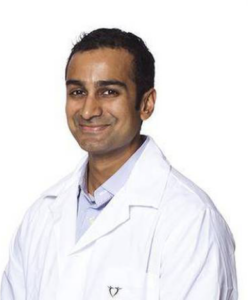











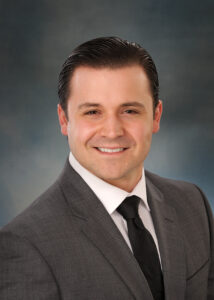


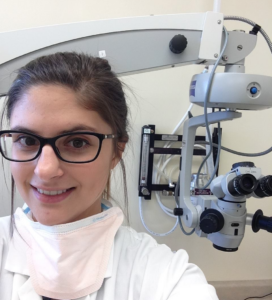










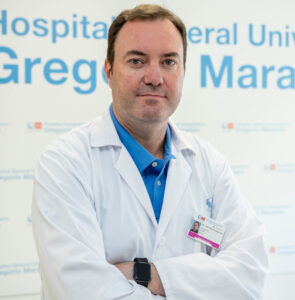









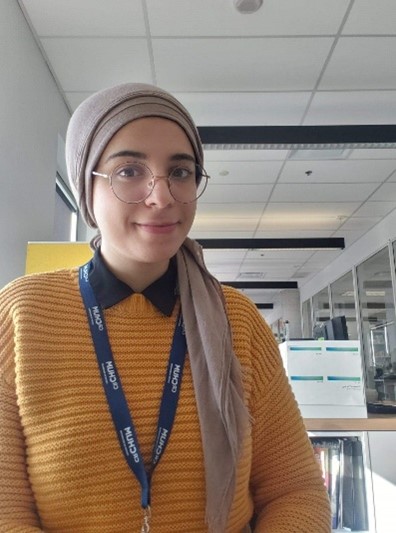




























 Terri Hansen-Gardiner is a Cree speaking Metis woman from Northern Saskatchewan as well as a 10 year Breast Cancer Survivor. Her tireless spirit and dedication to her community is undeniable. Terri is a cancer survivor who travels around the province to provide assistance, information, and support to Indigenous patients who are trying to access and navigate the cancer care system.
Terri Hansen-Gardiner is a Cree speaking Metis woman from Northern Saskatchewan as well as a 10 year Breast Cancer Survivor. Her tireless spirit and dedication to her community is undeniable. Terri is a cancer survivor who travels around the province to provide assistance, information, and support to Indigenous patients who are trying to access and navigate the cancer care system.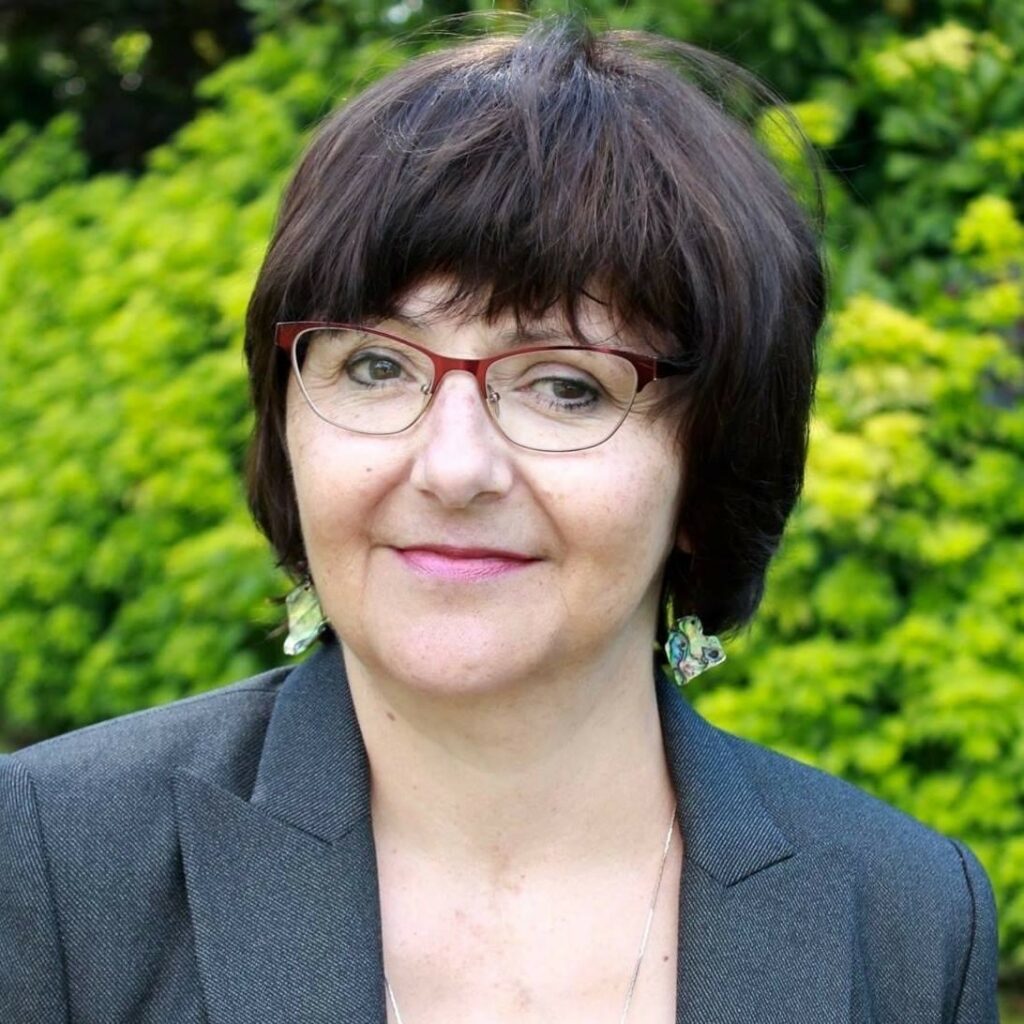





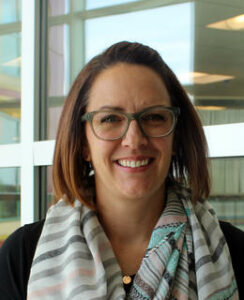






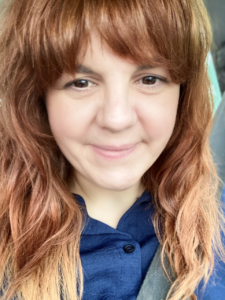

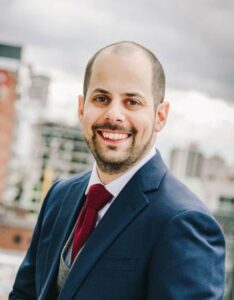
 Dr. Golnaz Karoubi is Assistant Scientist at the Toronto General HospitalResearch Institute and principal investigator in the Latner Thoracic Research Labs. She currently holds an Assistant Professor appointment in the department of Laboratory Medicine and Pathobiology and a cross-appointment in the department of Mechanical and Industrial Engineering at the University of Toronto. Dr. Karoubi received her PhD in Applied Science and Engineering at the University of Toronto and joined the Lung Regenerative Medicine Program in the Department of Clinical Research in Berne University, Switzerland for a post-doctoral research fellowship. She stayed on as a Group Leader in 2008 to direct the basic and transitional science as related to Cancer Stem Cell and Lung Regenerative Medicine in the Department of Biomedical Research at the University of Berne until 2012. In early 2012, she joined the team of Dr. Tom Waddell at the Toronto General Hospital Research Institute as a Senior Scientific Associate and was appointed to Assistant Scientist at the Toronto General Hospital Research Institute (University Health Network) in November 2019 and to Assistant Professor in the Department of Laboratory Medicine and Pathobiology in July 2020.
Dr. Golnaz Karoubi is Assistant Scientist at the Toronto General HospitalResearch Institute and principal investigator in the Latner Thoracic Research Labs. She currently holds an Assistant Professor appointment in the department of Laboratory Medicine and Pathobiology and a cross-appointment in the department of Mechanical and Industrial Engineering at the University of Toronto. Dr. Karoubi received her PhD in Applied Science and Engineering at the University of Toronto and joined the Lung Regenerative Medicine Program in the Department of Clinical Research in Berne University, Switzerland for a post-doctoral research fellowship. She stayed on as a Group Leader in 2008 to direct the basic and transitional science as related to Cancer Stem Cell and Lung Regenerative Medicine in the Department of Biomedical Research at the University of Berne until 2012. In early 2012, she joined the team of Dr. Tom Waddell at the Toronto General Hospital Research Institute as a Senior Scientific Associate and was appointed to Assistant Scientist at the Toronto General Hospital Research Institute (University Health Network) in November 2019 and to Assistant Professor in the Department of Laboratory Medicine and Pathobiology in July 2020. Dr. Haykal graduated from the University of Ottawa Faculty of Medicine in2007 as class valedictorian and silver medalist, and subsequently completed her residency training in Plastic and Reconstructive Surgery at the University of Toronto in 2016. During her residency, she completed a four-year Doctorate of Philosophy (PhD) in tissue engineering, regenerative medicine and immunology with a focus on tracheal reconstruction. She obtained numerous grants and awards including a CIHR Vanier Scholarship. Dr. Haykal then pursued fellowship training in microsurgical reconstruction at the Albany Medical Centre in New York. Dr. Haykal joined the University Health Network and the Toronto General Hospital in 2018. Her clinical focus is on complex oncological reconstruction and microsurgical reconstruction of the breast, head and neck and extremity. She started a lymphedema program in 2019 where she offers microsurgical techniques for the treatment of lymphedema.
Dr. Haykal graduated from the University of Ottawa Faculty of Medicine in2007 as class valedictorian and silver medalist, and subsequently completed her residency training in Plastic and Reconstructive Surgery at the University of Toronto in 2016. During her residency, she completed a four-year Doctorate of Philosophy (PhD) in tissue engineering, regenerative medicine and immunology with a focus on tracheal reconstruction. She obtained numerous grants and awards including a CIHR Vanier Scholarship. Dr. Haykal then pursued fellowship training in microsurgical reconstruction at the Albany Medical Centre in New York. Dr. Haykal joined the University Health Network and the Toronto General Hospital in 2018. Her clinical focus is on complex oncological reconstruction and microsurgical reconstruction of the breast, head and neck and extremity. She started a lymphedema program in 2019 where she offers microsurgical techniques for the treatment of lymphedema. Dr. Ahmed is a Professor in the Cumming School of Medicine at the University of Calgary. The recipient of the 2022 Hypertension Canada Senior Investigator Award, she is a nephrologist and clinician-scientist with a focus on sex and gender differences in human cardiovascular/kidney physiology and clinical outcomes. Dr. Ahmed is the Vice Chair (Research) for the Department of Medicine, Lead of the Libin Institute Women’s Cardiovascular Health Research Initiative at the University of Calgary and Lead of the Alberta Strategy for Patient Oriented Research Capacity Development Platform. Dr. Ahmed is an Advisory Board member for the Canadian Institutes of Health Research Institute of Gender and Health, a member of the Canadian Medical Association Journal Governing Council and the President-Elect for the Organization for the Study of Sex Differences.
Dr. Ahmed is a Professor in the Cumming School of Medicine at the University of Calgary. The recipient of the 2022 Hypertension Canada Senior Investigator Award, she is a nephrologist and clinician-scientist with a focus on sex and gender differences in human cardiovascular/kidney physiology and clinical outcomes. Dr. Ahmed is the Vice Chair (Research) for the Department of Medicine, Lead of the Libin Institute Women’s Cardiovascular Health Research Initiative at the University of Calgary and Lead of the Alberta Strategy for Patient Oriented Research Capacity Development Platform. Dr. Ahmed is an Advisory Board member for the Canadian Institutes of Health Research Institute of Gender and Health, a member of the Canadian Medical Association Journal Governing Council and the President-Elect for the Organization for the Study of Sex Differences.






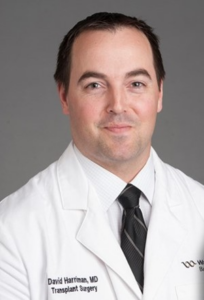






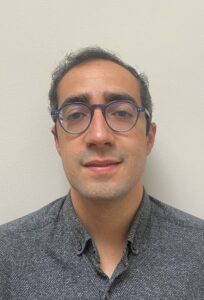


 r. Christopher Nguan is an Associate Professor at the University of British Columbia in the Department of Urological Sciences, Surgical Head of Kidney Transplantation at Vancouver General Hospital and the Director of the Surgical Technologies Experimental Laboratory & Advanced Robotics (STELLAR) facility at Vancouver General Hospital.
r. Christopher Nguan is an Associate Professor at the University of British Columbia in the Department of Urological Sciences, Surgical Head of Kidney Transplantation at Vancouver General Hospital and the Director of the Surgical Technologies Experimental Laboratory & Advanced Robotics (STELLAR) facility at Vancouver General Hospital.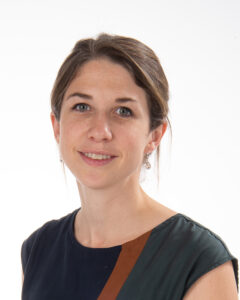 r Caroline Lamarche is a clinician scientist and transplant nephrologist at Maisonneuve-Rosemont Hospital. She is an assistant clinical professor at the Université de Montréal. After her nephrology training at the Université de Montréal (2015), she completed a Master degree on the use of adoptive immunotherapy to treat/prevent BK nephropathy in kidney transplant recipients. She then pursued a post-doctoral fellowship with Dr. Megan Levings at the University of British Columbia on the use of chimeric antigen receptor (CAR) regulatory T cells (Tregs) to induce transplant tolerance. Her lab is working on the development of adoptive immunotherapy in nephrology and understanding Treg dysfunction.
r Caroline Lamarche is a clinician scientist and transplant nephrologist at Maisonneuve-Rosemont Hospital. She is an assistant clinical professor at the Université de Montréal. After her nephrology training at the Université de Montréal (2015), she completed a Master degree on the use of adoptive immunotherapy to treat/prevent BK nephropathy in kidney transplant recipients. She then pursued a post-doctoral fellowship with Dr. Megan Levings at the University of British Columbia on the use of chimeric antigen receptor (CAR) regulatory T cells (Tregs) to induce transplant tolerance. Her lab is working on the development of adoptive immunotherapy in nephrology and understanding Treg dysfunction.
















 Dr. Tandon is an Associate Professor of Medicine, Co-Director of the Cirrhosis Care Clinic, Transplant Hepatologist and lead of the Cirrhosis Care Alberta quality improvement program. She obtained her training at the University of Alberta, the Hospital Clinic in Barcelona and Yale University. Her clinical practice and research are focused on cirrhosis with research interests including cirrhosis related complications, malnutrition, frailty, exercise therapy, palliative care, integrative health approaches such as meditation and knowledge translation. It is her career goal to provide wholistic, interdisciplinary, evidence based, patient-centered care through education, empowerment, engagement and team-work.
Dr. Tandon is an Associate Professor of Medicine, Co-Director of the Cirrhosis Care Clinic, Transplant Hepatologist and lead of the Cirrhosis Care Alberta quality improvement program. She obtained her training at the University of Alberta, the Hospital Clinic in Barcelona and Yale University. Her clinical practice and research are focused on cirrhosis with research interests including cirrhosis related complications, malnutrition, frailty, exercise therapy, palliative care, integrative health approaches such as meditation and knowledge translation. It is her career goal to provide wholistic, interdisciplinary, evidence based, patient-centered care through education, empowerment, engagement and team-work. Emily is a PhD student at the University of Alberta, where she completed her Master of Science (MSc) degree in medicine. With a passion for patient-oriented research and a commitment to improving health outcomes, Emily’s doctoral project focuses on EMPOWER, a 12-week online mind-body wellness program designed for adults living with chronic health conditions.
Emily is a PhD student at the University of Alberta, where she completed her Master of Science (MSc) degree in medicine. With a passion for patient-oriented research and a commitment to improving health outcomes, Emily’s doctoral project focuses on EMPOWER, a 12-week online mind-body wellness program designed for adults living with chronic health conditions. Dr Basil S. Nasir, M.B.B.Ch
Dr Basil S. Nasir, M.B.B.Ch Dr. Victor Ferreira is an Assistant Scientist in the Ajmera Transplant Centre at the University Health Network (UHN) and the Toronto General Hospital Research Institute (TGHRI). He is also an Assistant Professor at the University of Toronto in the Department of Laboratory Medicine and Pathobiology (LMP). He completed his PhD in Medical Sciences – Infection and Immunity Specialization at McMaster University in 2014 and post-doctoral training at UHN. His research program is focused on three pillars: I) using systems vaccinology to reveal insights into vaccine responses in immunocompromised individuals like transplant recipients; II) characterizing the impact of chronic viral infection on host immune responses; and III) developing novel methods for eliminating latent viruses in human organs. His work has been cited >2,500 times and is published in journals including the New England Journal of Medicine, Nature Immunology, the Lancet Infectious Diseases, Clinical Infectious Diseases, the American Journal of Transplantation and Journal of Infectious Diseases.
Dr. Victor Ferreira is an Assistant Scientist in the Ajmera Transplant Centre at the University Health Network (UHN) and the Toronto General Hospital Research Institute (TGHRI). He is also an Assistant Professor at the University of Toronto in the Department of Laboratory Medicine and Pathobiology (LMP). He completed his PhD in Medical Sciences – Infection and Immunity Specialization at McMaster University in 2014 and post-doctoral training at UHN. His research program is focused on three pillars: I) using systems vaccinology to reveal insights into vaccine responses in immunocompromised individuals like transplant recipients; II) characterizing the impact of chronic viral infection on host immune responses; and III) developing novel methods for eliminating latent viruses in human organs. His work has been cited >2,500 times and is published in journals including the New England Journal of Medicine, Nature Immunology, the Lancet Infectious Diseases, Clinical Infectious Diseases, the American Journal of Transplantation and Journal of Infectious Diseases. Chemical Engineering as an Assistant Professor in August 2014. She is a biochemical engineer with expertise in bioprocess development, high‑throughput screening and stem cell culture optimization. Her research aims to develop bioprocesses to produce and transplant therapeutic cells to treat diabetes and cardiovascular disease. She notably developed new methods to encapsulate pancreatic islets, as well as vascular biomaterials surface modification strategies which are now applied by other researchers around the world. Her emerging leadership in bioengineering was recognized through the 2014 Martin Sinacore Outstanding Young Investigator Award from Engineering Conferences International & Biogen Idec, as well as the “Étoiles effervescence” award from Montreal InVivo.
Chemical Engineering as an Assistant Professor in August 2014. She is a biochemical engineer with expertise in bioprocess development, high‑throughput screening and stem cell culture optimization. Her research aims to develop bioprocesses to produce and transplant therapeutic cells to treat diabetes and cardiovascular disease. She notably developed new methods to encapsulate pancreatic islets, as well as vascular biomaterials surface modification strategies which are now applied by other researchers around the world. Her emerging leadership in bioengineering was recognized through the 2014 Martin Sinacore Outstanding Young Investigator Award from Engineering Conferences International & Biogen Idec, as well as the “Étoiles effervescence” award from Montreal InVivo.


 Chantal Bémeur is a nutrition specialist in relation to liver disease and its many complications. Professor Bémeur trained as a dietitian/nutritionist and completed her graduate studies and two post-doctoral fellowships in nutrition, focusing on conditions affecting the hepatic and nervous systems, such as hepatic encephalopathy and Leigh Syndrome French Canadian. Professor Bémeur’s research activities are generally of a fundamental and clinical nature, including a collaboration with CHUM’s Department of Hepatology and Gastroenterology. As an expert member of the International Society on Hepatic Encephalopathy and Nitrogen Metabolism, Dr. Bémeur has participated in the development of guidelines on nutrition and liver disease. She is also part of a team of Canadian experts who developed an evidence-based nutritional education guide collaborating with people with chronic liver disease and their caregivers. She received an award from the Ordre professionnel des diététistes du Québec in 2018 for her work on this guide. Dr. Bémeur has published several book chapters, 30 scientific articles and over 100 scientific abstracts. Dr. Bémeur’s co-directs the HepatoNeuro Laboratory in the Cardiometabolic Axis of the Centre de recherche du Centre hospitalier de l’Université de Montréal (CRCHUM). Several organizations, including the Donation and Transplantation Research Program of Canada and the Canadian Institutes of Health Research fund Dr. Bémeur’s research.
Chantal Bémeur is a nutrition specialist in relation to liver disease and its many complications. Professor Bémeur trained as a dietitian/nutritionist and completed her graduate studies and two post-doctoral fellowships in nutrition, focusing on conditions affecting the hepatic and nervous systems, such as hepatic encephalopathy and Leigh Syndrome French Canadian. Professor Bémeur’s research activities are generally of a fundamental and clinical nature, including a collaboration with CHUM’s Department of Hepatology and Gastroenterology. As an expert member of the International Society on Hepatic Encephalopathy and Nitrogen Metabolism, Dr. Bémeur has participated in the development of guidelines on nutrition and liver disease. She is also part of a team of Canadian experts who developed an evidence-based nutritional education guide collaborating with people with chronic liver disease and their caregivers. She received an award from the Ordre professionnel des diététistes du Québec in 2018 for her work on this guide. Dr. Bémeur has published several book chapters, 30 scientific articles and over 100 scientific abstracts. Dr. Bémeur’s co-directs the HepatoNeuro Laboratory in the Cardiometabolic Axis of the Centre de recherche du Centre hospitalier de l’Université de Montréal (CRCHUM). Several organizations, including the Donation and Transplantation Research Program of Canada and the Canadian Institutes of Health Research fund Dr. Bémeur’s research.
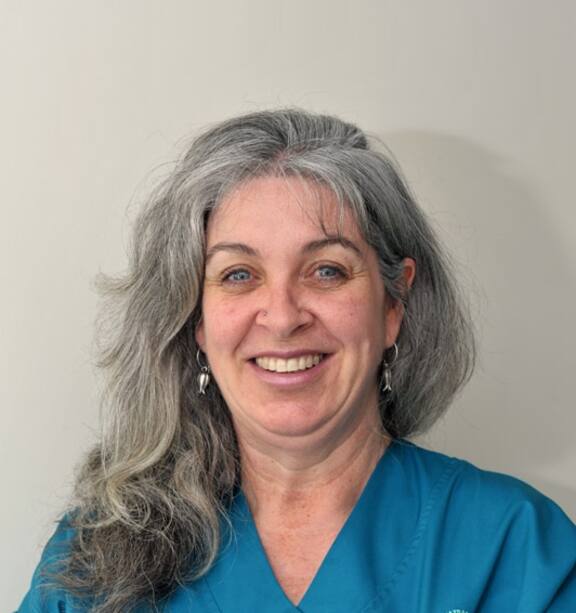
 Dr Thozama Siyotula is a distinguished paediatric surgeon at Red Cross War Memorial Children’s Hospital in Cape Town, South Africa. With a profound interest in hepatobiliary, transplant, thoracic and neonatal surgical outcomes. She completed her undergraduate training in 2011 at the University of the Witwatersrand in Johannesburg. Furthering her studies she went on to specialise in paediatric surgery through the Colleges of Medicine of South Africa, completing her FCPaedSurg (SA) in 2021 and a master’s in medicine (Paediatric Surgery) in 2021 at the University of Cape Town. She currently works as a paediatric surgeon and transplant surgeon. A senior lecture at the University of Cape Town and course convenor for the 5th year undergraduate paediatric surgery program at the University of Cape Town.
Dr Thozama Siyotula is a distinguished paediatric surgeon at Red Cross War Memorial Children’s Hospital in Cape Town, South Africa. With a profound interest in hepatobiliary, transplant, thoracic and neonatal surgical outcomes. She completed her undergraduate training in 2011 at the University of the Witwatersrand in Johannesburg. Furthering her studies she went on to specialise in paediatric surgery through the Colleges of Medicine of South Africa, completing her FCPaedSurg (SA) in 2021 and a master’s in medicine (Paediatric Surgery) in 2021 at the University of Cape Town. She currently works as a paediatric surgeon and transplant surgeon. A senior lecture at the University of Cape Town and course convenor for the 5th year undergraduate paediatric surgery program at the University of Cape Town.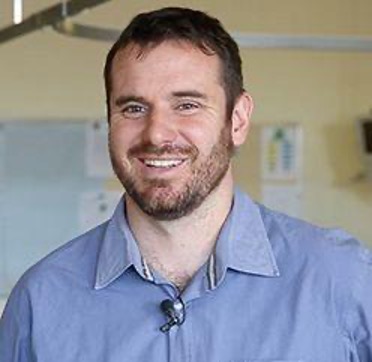 David Thomson is a critical care subspecialist and abdominal transplant surgeon at Groote Schuur Hospital and the University of Cape Town. His interests are deceased donation, ECMO, medical education and system improvement. He created the massive open online course Organ Donation: From Death to Life hosted on Coursera.org to improve education around organ donation and transplantation. He is the immediate past President of the Southern African Transplantation Society and led development on a report on Organ and Tissue Donation in South Africa: Creating a National Strategic Roadmap in collaboration with the International Society for Organ Donation and Procurement. He worked on the World Brain Death Project and is the lead author on the South African Guidelines for Determination of Death published in 2021.
David Thomson is a critical care subspecialist and abdominal transplant surgeon at Groote Schuur Hospital and the University of Cape Town. His interests are deceased donation, ECMO, medical education and system improvement. He created the massive open online course Organ Donation: From Death to Life hosted on Coursera.org to improve education around organ donation and transplantation. He is the immediate past President of the Southern African Transplantation Society and led development on a report on Organ and Tissue Donation in South Africa: Creating a National Strategic Roadmap in collaboration with the International Society for Organ Donation and Procurement. He worked on the World Brain Death Project and is the lead author on the South African Guidelines for Determination of Death published in 2021.
 About Dr. Julie Ho
About Dr. Julie Ho Dr. Tom Blydt-Hansen completed his MD at McGill University, and his Pediatric and Nephrology specialization at the Montreal Children’s Hospital, followed by further specialization in transplantation at the University of California, Los Angeles. He began his Nephrology career at the University of Manitoba in 2001, where he was Division Head of Nephrology from 2005-2014.
Dr. Tom Blydt-Hansen completed his MD at McGill University, and his Pediatric and Nephrology specialization at the Montreal Children’s Hospital, followed by further specialization in transplantation at the University of California, Los Angeles. He began his Nephrology career at the University of Manitoba in 2001, where he was Division Head of Nephrology from 2005-2014. Monica Bronowski completed an undergraduate degree in neuroscience at Dalhousie University, with a focus on innovative neurotechnology. Before starting her PhD, she worked in hematology, oncology, and bone marrow transplant (BMT), conducting clinical trials across various study phases for multiple myeloma, bone marrow transplant, and CAR-T therapies. This experience exposed her to both early and late-phase clinical trials, deepening her interest in translational research.
Monica Bronowski completed an undergraduate degree in neuroscience at Dalhousie University, with a focus on innovative neurotechnology. Before starting her PhD, she worked in hematology, oncology, and bone marrow transplant (BMT), conducting clinical trials across various study phases for multiple myeloma, bone marrow transplant, and CAR-T therapies. This experience exposed her to both early and late-phase clinical trials, deepening her interest in translational research. Angela Hamie has just graduated from the University of Alberta and holds a Bachelor of Science with Honors in Immunology and Infection. Her presentation will summarize her research conducted throughout her fourth year undergraduate thesis project, which focuses on the Age, Thymus Excision, Organ Type, and Immunosuppression on Lymphocyte Subpopulations in pediatric transplantation.
Angela Hamie has just graduated from the University of Alberta and holds a Bachelor of Science with Honors in Immunology and Infection. Her presentation will summarize her research conducted throughout her fourth year undergraduate thesis project, which focuses on the Age, Thymus Excision, Organ Type, and Immunosuppression on Lymphocyte Subpopulations in pediatric transplantation. Mitchell Wagner is currently a first year medical student at the University of Alberta. He graduated from the U of A in 2022 with an Honors degree in Immunology and Infection with a certificate in biomedical research. He recently defended a Master of Science in Experimental Surgery, focusing on the optimization of out-of-body heart perfusion. Mitchell’s main research interest is on strategies that improve donated organs through ex-situ heart perfusion apparati, however has also been involved in clinical research within the areas of radiology, respiratory medicine, and cardiology. Mitchell is the recipient of multiple prestigious awards such as the Canada Graduate Scholarship – Masters and the Cote Biomedical Research Studentship. As an aspiring surgeon-scientist, he intends on completing an MD/PhD program focusing to further improve out of body heart perfusion protocols.
Mitchell Wagner is currently a first year medical student at the University of Alberta. He graduated from the U of A in 2022 with an Honors degree in Immunology and Infection with a certificate in biomedical research. He recently defended a Master of Science in Experimental Surgery, focusing on the optimization of out-of-body heart perfusion. Mitchell’s main research interest is on strategies that improve donated organs through ex-situ heart perfusion apparati, however has also been involved in clinical research within the areas of radiology, respiratory medicine, and cardiology. Mitchell is the recipient of multiple prestigious awards such as the Canada Graduate Scholarship – Masters and the Cote Biomedical Research Studentship. As an aspiring surgeon-scientist, he intends on completing an MD/PhD program focusing to further improve out of body heart perfusion protocols. Sarjana Alam is an undergraduate science student at the University of Alberta, where she is a research trainee under the supervision of Dr. Esme Dijke in the Department of Laboratory Medicine & Pathology. She is involved in a project investigating the cryopreservation of T regulatory cells for tolerogenic cell therapy.
Sarjana Alam is an undergraduate science student at the University of Alberta, where she is a research trainee under the supervision of Dr. Esme Dijke in the Department of Laboratory Medicine & Pathology. She is involved in a project investigating the cryopreservation of T regulatory cells for tolerogenic cell therapy. Marie-Pier joined Dre. Marie-Josée Hébert’s lab in the nephrology, transplantation and renal regeneration research unit at the CRCHUM in 2024. She obtained her BSc degree in biology at McGill university and is now pursuing a Masters degree in the Molecular Biology program at l’Université de Montréal. She is currently working on evaluating the pro-angiogenic potential of RNAs enriched in apoptotic exosomes and whether these RNAs cooperate to modulate endothelial function. Marie-Pier is also a trainee in the Canadian Donation and Transplantation Research program (CDTRP).Outside of the lab, Marie-Pier loves to read, go to spin classes and play word games like Scattegories and Bananagrams.
Marie-Pier joined Dre. Marie-Josée Hébert’s lab in the nephrology, transplantation and renal regeneration research unit at the CRCHUM in 2024. She obtained her BSc degree in biology at McGill university and is now pursuing a Masters degree in the Molecular Biology program at l’Université de Montréal. She is currently working on evaluating the pro-angiogenic potential of RNAs enriched in apoptotic exosomes and whether these RNAs cooperate to modulate endothelial function. Marie-Pier is also a trainee in the Canadian Donation and Transplantation Research program (CDTRP).Outside of the lab, Marie-Pier loves to read, go to spin classes and play word games like Scattegories and Bananagrams. Dr. Andreas Kramer is a Clinical Associate Professor in the Departments of Critical Care Medicine and Clinical Neurosciences. He graduated from medical school at the University of Manitoba in 1997 and received specialty training in internal medicine and critical care at the University of Calgary in 2002. After working for three years as a community internist and intensivist in Manitoba, he obtained fellowship training in neurocritical care at the University of Virginia 2005-2007. During this time, he also completed a Master of Science degree in Health Evaluation Sciences. Dr. Kramer joined the Department of Critical Care Medicine in Calgary in 2007. He has a particular research and clinical interest in neuro-monitoring and prevention of secondary brain injury in neurocritical care patients. Dr. Kramer is on the Editorial Boards of the journals Neurocritical Care and Critical Care Medicine. He has over 90 peer-reviewed publications, with about half of these as first or senior author. He is a co-investigator in a number of CIHR-sponsored clinical trials. Dr. Kramer has written multiple textbook chapters on a variety of neurocritical care topics, and was the co-editor of two 2017 neurocritical care editions of the Handbook in Clinical Neurology. Since 2011, he has been the Medical Director of the Southern Alberta Organ and Tissue Donation Program, and serves on numerous Canadian Blood Services advisory committees. Dr. Kramer is married with four very energetic children between the ages of 9 and 17.
Dr. Andreas Kramer is a Clinical Associate Professor in the Departments of Critical Care Medicine and Clinical Neurosciences. He graduated from medical school at the University of Manitoba in 1997 and received specialty training in internal medicine and critical care at the University of Calgary in 2002. After working for three years as a community internist and intensivist in Manitoba, he obtained fellowship training in neurocritical care at the University of Virginia 2005-2007. During this time, he also completed a Master of Science degree in Health Evaluation Sciences. Dr. Kramer joined the Department of Critical Care Medicine in Calgary in 2007. He has a particular research and clinical interest in neuro-monitoring and prevention of secondary brain injury in neurocritical care patients. Dr. Kramer is on the Editorial Boards of the journals Neurocritical Care and Critical Care Medicine. He has over 90 peer-reviewed publications, with about half of these as first or senior author. He is a co-investigator in a number of CIHR-sponsored clinical trials. Dr. Kramer has written multiple textbook chapters on a variety of neurocritical care topics, and was the co-editor of two 2017 neurocritical care editions of the Handbook in Clinical Neurology. Since 2011, he has been the Medical Director of the Southern Alberta Organ and Tissue Donation Program, and serves on numerous Canadian Blood Services advisory committees. Dr. Kramer is married with four very energetic children between the ages of 9 and 17. Dr. Mypinder Sekhon is an intensivist and clinician-scientist in the intensive care unit at Vancouver General Hospital. He completed his medical school training, internal medicine residency and critical care medicine subspecialty fellowship at the University of British Columbia prior to completing a neurocritical care fellowship at Addenbrooke’s Hospital at the University of Cambridge, United Kingdom under the guidance of Professors David Menon and Arun Gupta. Subsequently, he completed is PhD in neurovascular sciences under Professor Philip Ainslie, a Canada Research Chair in cerebrovascular physiology. His clinical and research interests include multimodal neuromonitoring, cerebral autoregulation disturbance after brain injury and critical care management of severe acute brain injury patients.
Dr. Mypinder Sekhon is an intensivist and clinician-scientist in the intensive care unit at Vancouver General Hospital. He completed his medical school training, internal medicine residency and critical care medicine subspecialty fellowship at the University of British Columbia prior to completing a neurocritical care fellowship at Addenbrooke’s Hospital at the University of Cambridge, United Kingdom under the guidance of Professors David Menon and Arun Gupta. Subsequently, he completed is PhD in neurovascular sciences under Professor Philip Ainslie, a Canada Research Chair in cerebrovascular physiology. His clinical and research interests include multimodal neuromonitoring, cerebral autoregulation disturbance after brain injury and critical care management of severe acute brain injury patients.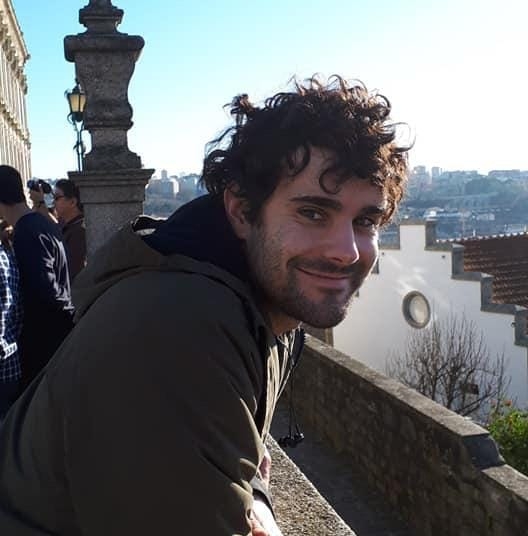 My name is Matthew Kolisnyk. I am a third-year PhD Candidate in Neuroscience at Western University. My undergraduate training was in Psychology and Statistics, where I spent time applying neuroimaging techniques to memory and mindfulness research. In my current lab, I use neuroimaging to measure residual cognitive function in patients who have sustained an acute brain injury and use that neural measure in combination with machine learning to try and predict which patients will survive their injury. I currently am a research associate at the London Health Science Centre, where we measure physiological and neural changes that occur when patients undergo planned withdrawal of life-sustaining measures.
My name is Matthew Kolisnyk. I am a third-year PhD Candidate in Neuroscience at Western University. My undergraduate training was in Psychology and Statistics, where I spent time applying neuroimaging techniques to memory and mindfulness research. In my current lab, I use neuroimaging to measure residual cognitive function in patients who have sustained an acute brain injury and use that neural measure in combination with machine learning to try and predict which patients will survive their injury. I currently am a research associate at the London Health Science Centre, where we measure physiological and neural changes that occur when patients undergo planned withdrawal of life-sustaining measures. Jordan is a PhD student at UBC working in the Vancouver General Hospital ICU. His current work focuses on donation after circulatory death by looking at how the brain responds during the dying process after withdrawal of life-sustaining measures. During Jordan’s undergraduate degree in Health Sciences and Physics, he got his start in research focusing on whole body hypoxia in the context of high altitude physiology. This led to working in industry since 2020 using medical imaging to evaluate hypoxia and ischemia in wound care, vascular surgery, and plastic and reconstructive surgery. Jordan returned to school in 2021 to pursue a MSc with Dr. Glen Foster at UBCO focusing on developing and validating a new medical imaging approach to quantify diaphragm blood flow in humans. In 2023, Jordan joined the ICU Research Group to continue looking at oxygenation and blood flow in critically ill patients. As such, the unifying theme of Jordan’s work involves investigating low oxygen and blood flow in both healthy and clinical populations. This focus on physiology underpins the organ procurement process in donation after circulatory death as warm ischemic times may render organs ineligible for transplantation. Outside of research, Jordan can be found playing hockey, biking, running, reading, or trying to spend as much time outdoors in Alberta or British Columbia.
Jordan is a PhD student at UBC working in the Vancouver General Hospital ICU. His current work focuses on donation after circulatory death by looking at how the brain responds during the dying process after withdrawal of life-sustaining measures. During Jordan’s undergraduate degree in Health Sciences and Physics, he got his start in research focusing on whole body hypoxia in the context of high altitude physiology. This led to working in industry since 2020 using medical imaging to evaluate hypoxia and ischemia in wound care, vascular surgery, and plastic and reconstructive surgery. Jordan returned to school in 2021 to pursue a MSc with Dr. Glen Foster at UBCO focusing on developing and validating a new medical imaging approach to quantify diaphragm blood flow in humans. In 2023, Jordan joined the ICU Research Group to continue looking at oxygenation and blood flow in critically ill patients. As such, the unifying theme of Jordan’s work involves investigating low oxygen and blood flow in both healthy and clinical populations. This focus on physiology underpins the organ procurement process in donation after circulatory death as warm ischemic times may render organs ineligible for transplantation. Outside of research, Jordan can be found playing hockey, biking, running, reading, or trying to spend as much time outdoors in Alberta or British Columbia. Hayden John is a student researcher passionate about addressing health inequities through patient and community-centred research. He has recently completed the Queen’s Accelerated Route to Medical School (QuARMS) pathway and is a first-year medical student at Queen’s University. Currently, he is a research student with the Kidney Health Education Research Group (KHERG) focusing on the A.C.TI.O.N Project: Improving Access to Living Donor Kidney Transplantation (LDKT) in Ethno-racial Minority Communities in Canada. Under the supervision of Principal Investigator Dr. Istvan Mucsi, Hayden explored the perceived risks and benefits of kidney donation among African, Caribbean and Black Canadians.
Hayden John is a student researcher passionate about addressing health inequities through patient and community-centred research. He has recently completed the Queen’s Accelerated Route to Medical School (QuARMS) pathway and is a first-year medical student at Queen’s University. Currently, he is a research student with the Kidney Health Education Research Group (KHERG) focusing on the A.C.TI.O.N Project: Improving Access to Living Donor Kidney Transplantation (LDKT) in Ethno-racial Minority Communities in Canada. Under the supervision of Principal Investigator Dr. Istvan Mucsi, Hayden explored the perceived risks and benefits of kidney donation among African, Caribbean and Black Canadians. Meghan He is a UBC medical student who studied Comparative Literature and Psychobiology at UCLA. Her research focuses on grounding medicine in the humanity of patient stories. She is co-President of the UBC Surgical Club, where she co-founded the EDI advocacy group, UpSurge, in alliance in the UBC Department of Surgery. In her free time, she teaches kids’ yoga with the Vancouver School Board and volunteers for community dance events.
Meghan He is a UBC medical student who studied Comparative Literature and Psychobiology at UCLA. Her research focuses on grounding medicine in the humanity of patient stories. She is co-President of the UBC Surgical Club, where she co-founded the EDI advocacy group, UpSurge, in alliance in the UBC Department of Surgery. In her free time, she teaches kids’ yoga with the Vancouver School Board and volunteers for community dance events.


 Dr. David Nicholas is a Professor and Associate Dean, Research and Partnerships in the Faculty of Social Work at the University of Calgary. He is the author of over 200 peer-reviewed research publications addressing topics such as wellbeing and transition to adulthood in chronic health conditions, including kidney disease. Dr. Nicholas’ research further focuses on capacity development in service delivery as well as navigation support for individuals with chronic health issues and disability, and their families. Dr. Nicholas has been the principal investigator on multiple grants from provincial, federal and international sources. He also brings clinical experience as a former nephrology social worker.
Dr. David Nicholas is a Professor and Associate Dean, Research and Partnerships in the Faculty of Social Work at the University of Calgary. He is the author of over 200 peer-reviewed research publications addressing topics such as wellbeing and transition to adulthood in chronic health conditions, including kidney disease. Dr. Nicholas’ research further focuses on capacity development in service delivery as well as navigation support for individuals with chronic health issues and disability, and their families. Dr. Nicholas has been the principal investigator on multiple grants from provincial, federal and international sources. He also brings clinical experience as a former nephrology social worker.
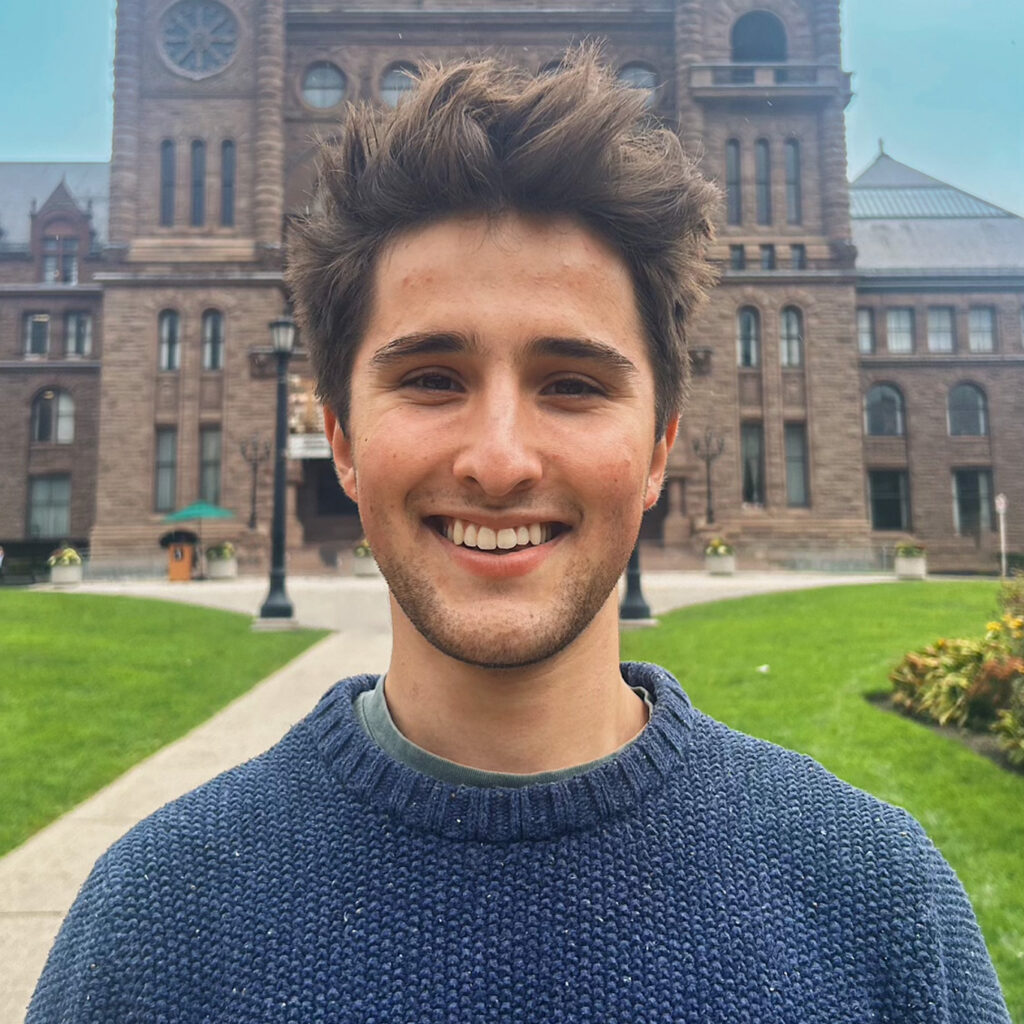

 Sarah Pol is a Clinical Research Project Manager in the Anthony Lab at The Hospital for Sick Children (SickKids). She completed her undergraduate training in Health Sciences, Anthropology and Community Development at Western University, received a Master of Science in Global Health from McMaster University and pursued further training in Project Management at the University of Toronto. She is the User Experience and Implementation Lead for Voxe, an innovative, child- and healthcare provider-friendly, electronic patient-reported outcome measures (ePROM) platform for data capture and visualization. She is intricately involved in the SickKids Mental Health Measurement-Based Care (MBC) initiative’s clinical implementation of Voxe. Sarah is passionate about equity-oriented health research, the use of qualitative methods to amplify patients’ voices, artificial intelligence, and the meaningful integration of ePROMs into clinical practice to support MBC.
Sarah Pol is a Clinical Research Project Manager in the Anthony Lab at The Hospital for Sick Children (SickKids). She completed her undergraduate training in Health Sciences, Anthropology and Community Development at Western University, received a Master of Science in Global Health from McMaster University and pursued further training in Project Management at the University of Toronto. She is the User Experience and Implementation Lead for Voxe, an innovative, child- and healthcare provider-friendly, electronic patient-reported outcome measures (ePROM) platform for data capture and visualization. She is intricately involved in the SickKids Mental Health Measurement-Based Care (MBC) initiative’s clinical implementation of Voxe. Sarah is passionate about equity-oriented health research, the use of qualitative methods to amplify patients’ voices, artificial intelligence, and the meaningful integration of ePROMs into clinical practice to support MBC. Jia Lin, MPH, is a Clinical Research Project Coordinator working alongside Dr. Samantha Anthony, a Health Clinician Scientist, in the Child Health Evaluative Sciences program at The Hospital for Sick Children in Toronto. The Anthony Lab examines the biopsychosocial impact of pediatric chronic illness on patients and families, with a focus on patient engagement, patient-reported outcome measures, implementation science, and mixed methods. In her role, Jia leads multiple clinical research studies across the research pipeline, including a current multi-phase, cross-Canada study exploring the experiences of Indigenous children and families who have received a solid organ transplantation. Rooted in patient and community engagement, this research employs storytelling to consider the multiplicity of knowledge, including Indigenous Knowledge, to advance child health equity. Jia recently began her PhD at McGill University with research interests at the nexus of equity-oriented, patient-engaged health research and applying critical qualitative approaches to amplify patients’ voices.
Jia Lin, MPH, is a Clinical Research Project Coordinator working alongside Dr. Samantha Anthony, a Health Clinician Scientist, in the Child Health Evaluative Sciences program at The Hospital for Sick Children in Toronto. The Anthony Lab examines the biopsychosocial impact of pediatric chronic illness on patients and families, with a focus on patient engagement, patient-reported outcome measures, implementation science, and mixed methods. In her role, Jia leads multiple clinical research studies across the research pipeline, including a current multi-phase, cross-Canada study exploring the experiences of Indigenous children and families who have received a solid organ transplantation. Rooted in patient and community engagement, this research employs storytelling to consider the multiplicity of knowledge, including Indigenous Knowledge, to advance child health equity. Jia recently began her PhD at McGill University with research interests at the nexus of equity-oriented, patient-engaged health research and applying critical qualitative approaches to amplify patients’ voices.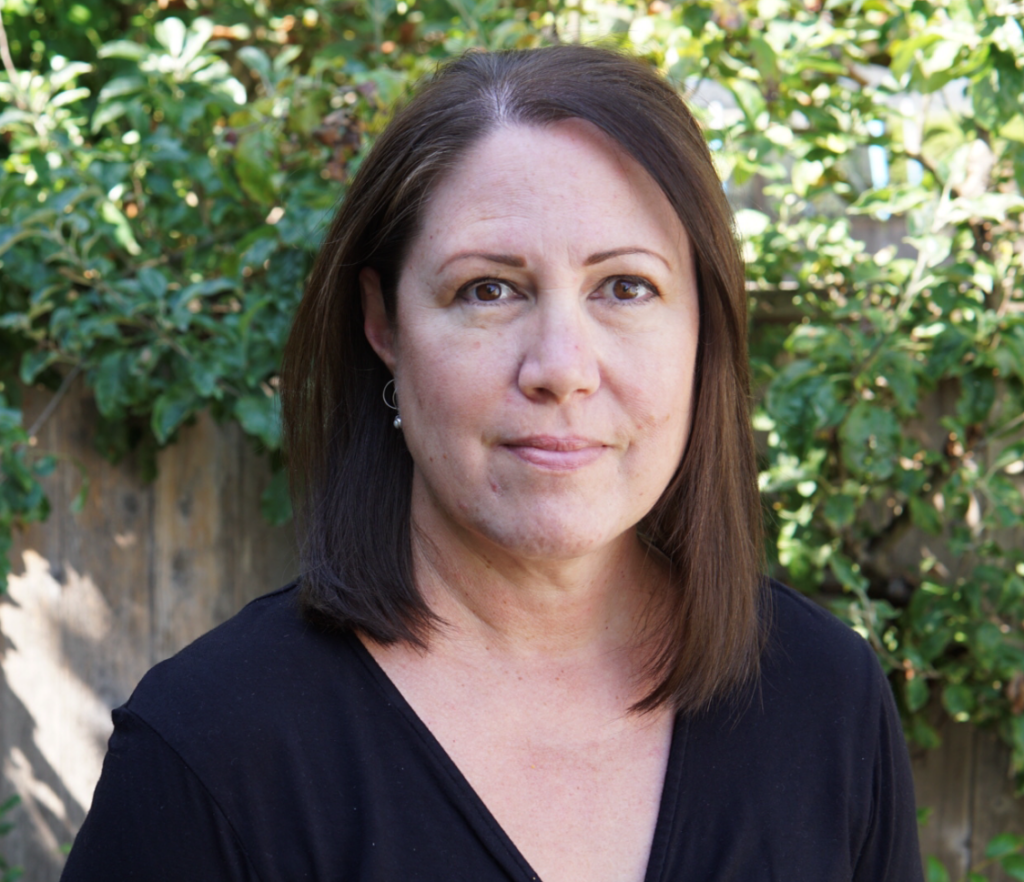
 I obtained my PharmD from the University of Montreal, where I developed a strong foundation in pharmacotherapy. Eager to deepen my expertise, I completed a master’s in advanced pharmacotherapy, which enabled me to become a hospital pharmacist. For several years, I specialized as a cardiology and heart failure pharmacist, gaining invaluable experience in managing complex patient needs. Driven by a desire to expand my clinical skills, I pursued a medical degree, graduating with my MD from the University of Montreal in 2021 and earning a place on the Dean’s List. Following this achievement, I completed my training in internal medicine, and as of July 2024, I am currently in a cardiology residency at the University of Montreal. My primary interests lie in advanced heart failure and heart transplantation, areas in which I am actively involved in research with the advanced heart failure and heart transplant team at the Montreal Heart Institute. My background in pharmacy and medicine uniquely positions me to contribute to the evolving field of heart transplantation.
I obtained my PharmD from the University of Montreal, where I developed a strong foundation in pharmacotherapy. Eager to deepen my expertise, I completed a master’s in advanced pharmacotherapy, which enabled me to become a hospital pharmacist. For several years, I specialized as a cardiology and heart failure pharmacist, gaining invaluable experience in managing complex patient needs. Driven by a desire to expand my clinical skills, I pursued a medical degree, graduating with my MD from the University of Montreal in 2021 and earning a place on the Dean’s List. Following this achievement, I completed my training in internal medicine, and as of July 2024, I am currently in a cardiology residency at the University of Montreal. My primary interests lie in advanced heart failure and heart transplantation, areas in which I am actively involved in research with the advanced heart failure and heart transplant team at the Montreal Heart Institute. My background in pharmacy and medicine uniquely positions me to contribute to the evolving field of heart transplantation. Ikram Abow-Mohamed is a PGY-3 Internal Medicine resident at McGill University, set to begin a Gastroenterology fellowship at McGill in the upcoming year.
Ikram Abow-Mohamed is a PGY-3 Internal Medicine resident at McGill University, set to begin a Gastroenterology fellowship at McGill in the upcoming year.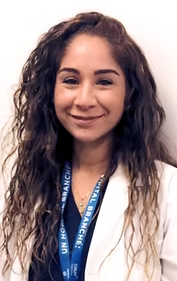 Eva Amzallag holds a master’s degree in anthropology (2018) and a master’s degree in epidemiology (2024), both from Université de Montréal. Currently pursuing a PhD in epidemiology, her research interests include liver transplantation, transfusional medicine, and postoperative complications. Under the supervision of Dr. François Martin Carrier, anesthesiologist at the Centre hospitalier de l’Université de Montréal and CDTRP Investigator, her work explores the relationship between blood transfusions and postoperative pulmonary complications in liver transplant recipients.
Eva Amzallag holds a master’s degree in anthropology (2018) and a master’s degree in epidemiology (2024), both from Université de Montréal. Currently pursuing a PhD in epidemiology, her research interests include liver transplantation, transfusional medicine, and postoperative complications. Under the supervision of Dr. François Martin Carrier, anesthesiologist at the Centre hospitalier de l’Université de Montréal and CDTRP Investigator, her work explores the relationship between blood transfusions and postoperative pulmonary complications in liver transplant recipients. Vanessa is a PhD-nurse, and a former Organ Donation Coordinator who has been devoted to research and active involvement in Organ Donation and Transplantation activities for over 10 years. Her research expertise is focused in quality improvement of organ donation programs and structures worldwide. She was a Kidney Research Scientist Core Education Program (KRESCENT) fellow and a Canadian Donation and Transplantation Research Program (CDTRP) trainee. She currently co-leads two groups within the CDTRP structure: Theme 1 “Improve the Culture of Donation” and the Allied Research in Donation and Transplantation (ARDOT) working group. She is currently an Assistant Professor at Brock University, and lead the investigation of burnout among donation coordinators, with the support and collaboration of Canadian Blood Services and key organ donation researchers nationally and internationally.
Vanessa is a PhD-nurse, and a former Organ Donation Coordinator who has been devoted to research and active involvement in Organ Donation and Transplantation activities for over 10 years. Her research expertise is focused in quality improvement of organ donation programs and structures worldwide. She was a Kidney Research Scientist Core Education Program (KRESCENT) fellow and a Canadian Donation and Transplantation Research Program (CDTRP) trainee. She currently co-leads two groups within the CDTRP structure: Theme 1 “Improve the Culture of Donation” and the Allied Research in Donation and Transplantation (ARDOT) working group. She is currently an Assistant Professor at Brock University, and lead the investigation of burnout among donation coordinators, with the support and collaboration of Canadian Blood Services and key organ donation researchers nationally and internationally.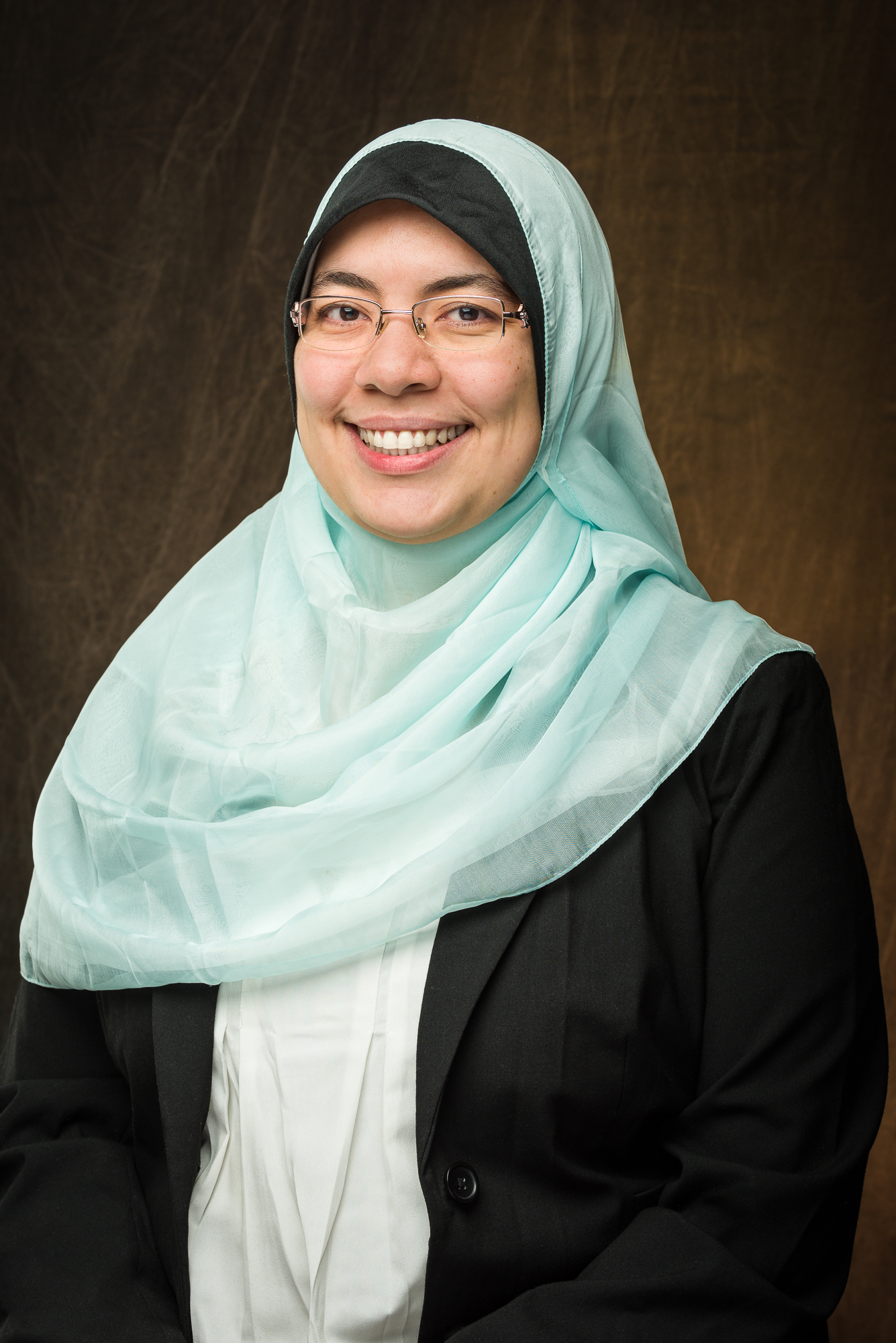 Dr. Somaya Zahran is currently a Nephrology fellow at McGill University and serves as a Chief fellow in the program. She earned her medical degree from Egypt and completed her PhD at the University of Alberta before pursuing internal medicine residency and nephrology fellowship at McGill University. Dr. Zahran is an AJKD editorial intern and a trainee member of the Canadian Society of Nephrology Clinical Practice Guideline Committee. She is looking forward to starting her Transplant fellowship at Mayo Clinic, Rochester in Jul 2025. Outside of her academic pursuits, Somaya loves spending time with her family and getting creative in the kitchen—she’s on a mission to find the perfect balance between kidney health and decadent desserts!
Dr. Somaya Zahran is currently a Nephrology fellow at McGill University and serves as a Chief fellow in the program. She earned her medical degree from Egypt and completed her PhD at the University of Alberta before pursuing internal medicine residency and nephrology fellowship at McGill University. Dr. Zahran is an AJKD editorial intern and a trainee member of the Canadian Society of Nephrology Clinical Practice Guideline Committee. She is looking forward to starting her Transplant fellowship at Mayo Clinic, Rochester in Jul 2025. Outside of her academic pursuits, Somaya loves spending time with her family and getting creative in the kitchen—she’s on a mission to find the perfect balance between kidney health and decadent desserts!